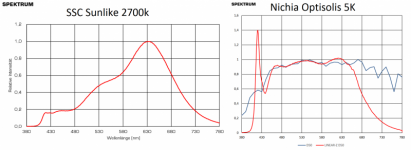RenaissanceBrah
Active member
I've heard that for growing equatorial landrace sativas indoors, people have recommended high Kelvin lights (10,000K, 6500K, etc) to bring out the most positive effects / high in the genetics.
I'm chasing the most positive effect possible, I don't mind low potency and low yield.
Anyone have experience with varying Kelvin values, and how it changed the effect of the sativa?
(Was going to buy LED lights soon, I saw 6500K Kingbrite lights I was thinking of getting. I would get the whole spectrum of lights, but on a budget, was going to buy two 250W 6500K Kingbrites).
I'm chasing the most positive effect possible, I don't mind low potency and low yield.
Anyone have experience with varying Kelvin values, and how it changed the effect of the sativa?
(Was going to buy LED lights soon, I saw 6500K Kingbrite lights I was thinking of getting. I would get the whole spectrum of lights, but on a budget, was going to buy two 250W 6500K Kingbrites).











